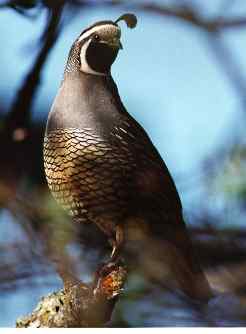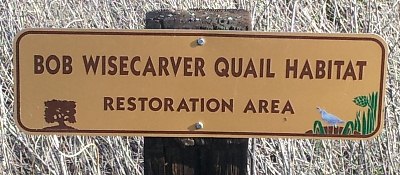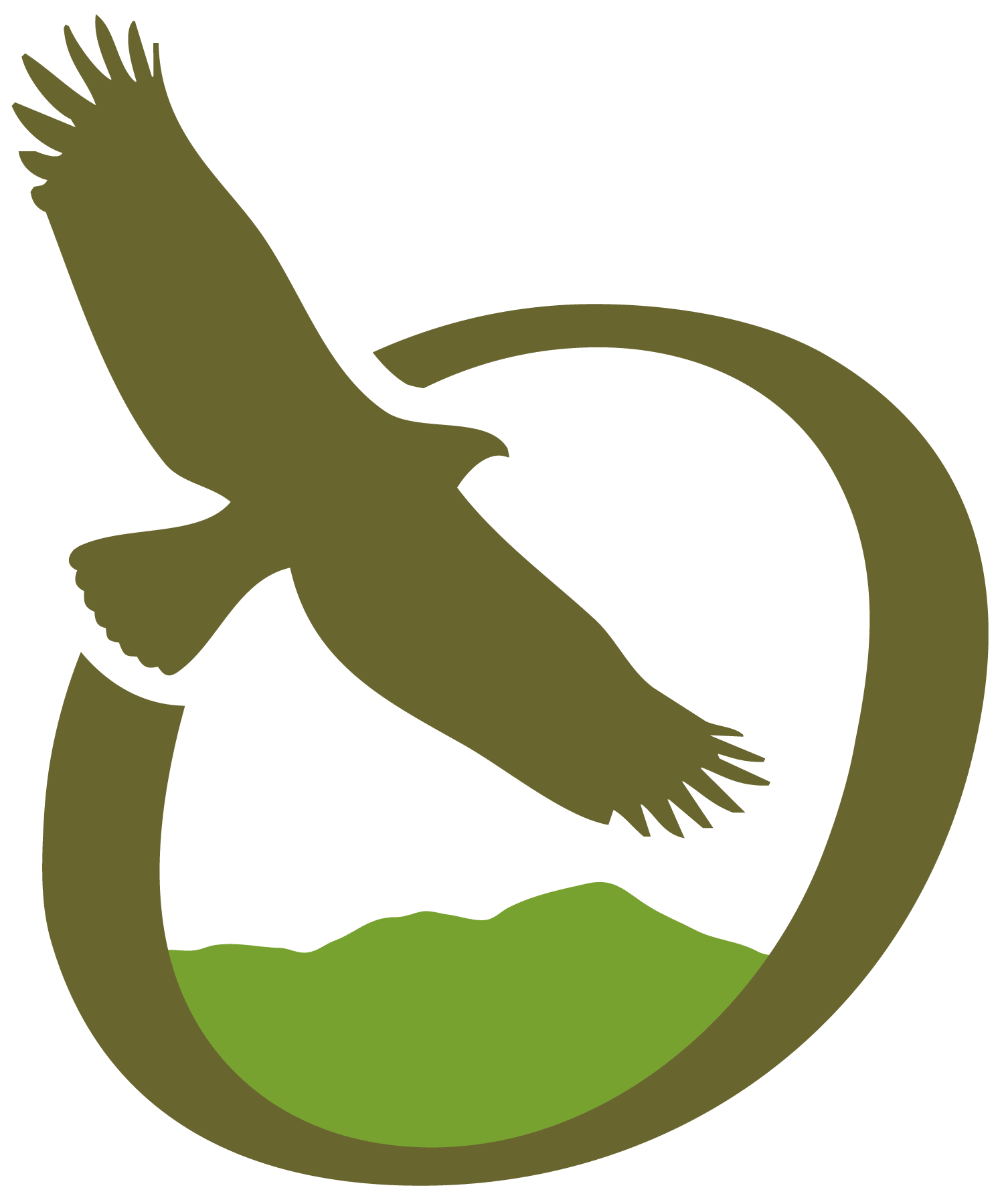
Quail Habitat Restoration
Shell Ridge lacks the brush and vines and other shelter that ground birds and small animals need for shelter and food. The Walnut Creek Open Space Foundation sponsors a Quail Habitat Restoration Project to restore cover and food sources for them. Starting in the fall of 1996 Bob Wisecarver recruited volunteers and began the project.Bull Pond
We selected a gully below Bull Pond above Borges Ranch. This gully has wet ground at the bottom for much of the year and sloping sides nearby -- a good basis for constructing quail habitat. Since this area is grazed by cattle, we fenced off the gully and the pond above. We constructed several brush piles to provide a place where birds and animals could seek shelter. We added coast live oaks because the quail use them for winter perches.Brush piles provide protection for the quail
That winter we planted a number of plants in the gully and above the pond. Plants such as Quail bush (Atriplex), coyote bush, toyon, elderberry, ceanothus, wild rose and others were selected for their food value and appropriateness to the area. During the spring and summer we watered the plants and weeded around them. Quail bush in particular has been successful; most plants survived and began producing seed the first year. Several bushes are now 10 feet across. Other plants have also survived and prospered. We have also planted live oaks in addition to bushes and small plants.We also planted willows in the wettest part of the gully and around the pond. Three willows from this planting survived the next summer when Bull Pond dried up. Volunteer willows appeared after the El Nino winter of 1997-8 and fared better. We have been extending the habitat up above Bull Pond with planting and brush piles inside the fenced area. Outside the fence we have established a chain of brush piles to encourage quail to use the area all the way over to the Twin Ponds in the next drainage.
Preparing a trail for quail. They don't like to walk through tall grasses.
Upper Twin Pond
The upper pond of the Twin Ponds area was fenced in during the winter of 1998-9 and bushes were planted within this fenced area. We scraped a number of 3x3 foot areas clear of grass and planted them with a mixture of seeds including 3 kinds of sage, chamise, toyon, quail bush and coyote brush. The Cal sage and coyote brush were successful in some areas; the other species were not.Coyote brush planting
Quail Guzzler
In the fall of 2003, we added a Quail Guzzler where thirsty quail and other birds could get a needed drink during the dry season. The Guzzler was very successful in attracting quail, gold-crowned sparrows, and other birds. However, it broke after a year and we did not replace it. The Board made a decision not to introduce such unnatural devices or objects into the environment. The quail were thriving without the guzzler.Installing a Quail Guzzler nestled within a quail bush. Water is released from a 30-gallon tank through a float valve.
Results
We began to see results from the project the first spring with many sightings of quail and other birds using the brush piles. This project has been a typical Walnut Creek effort: It started with a volunteer with an idea and a lot of energy, used plenty of volunteer labor and some money from the Walnut Creek Open Space Foundation, and got lots of cooperation from Walnut Creek's Open Space Staff.The quail population increased tenfold with the increased cover from the bushes we planted. Brush rabbits discovered the site and we have a healthy population of them, too. In 2005 Bob proudly reported that a Cooper's hawk had moved in. His new ecosystem was complete – it had attracted a predator.
Shortly before he died, the City Council renamed the area in his honor in recognition of his work.

The original portion of the project has moved into maintenance mode. We pulled some noxious weeds – yellow star thistle and dittrichia – in 2011 and we'll have to keep an eye on them to be sure they don't take over. Work continues in the area between Borges Ranch and Twin Ponds as part of our Chaparral Habitat Project.
Bill Hunt




 Join/Renew
Join/Renew Donate
Donate Volunteer
Volunteer Maps
Maps Newsletter
Newsletter Facebook
Facebook
